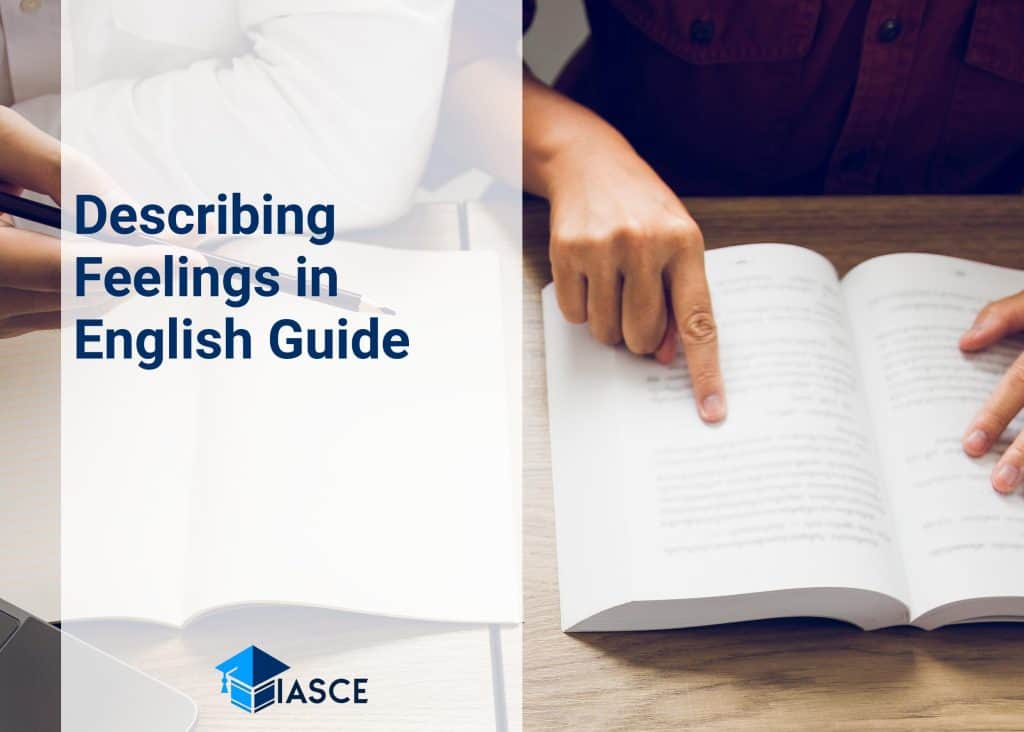Ever felt tongue-tied trying to express your emotions? Trust me, you’re not alone. Expressing feelings accurately in English can be a real challenge, especially when you’re overwhelmed with emotion or facing new experiences.
In this article, I’m going to give you some tips and tricks on how to nail down your feelings into words. Not only will this help enhance your communication skills but also deepen your understanding of the English language.
Whether you’re an English learner seeking to enrich vocabulary or someone simply wanting to articulate emotions better, this guide’s got something for everyone! So let’s dive right into the world of expressive language and explore how we can accurately describe feelings in English.
Understanding the Language of Emotions
Let’s dive straight into what I like to call, the “language of emotions”. First off, it’s important to understand that our feelings aren’t just simple words. They’re complex entities that hold different meanings for everyone. So describing them accurately in English can be a bit tricky.
To start with, you should know there are basic emotions that we all experience. These include happiness, sadness, fear, anger, and surprise. Now, each of these can further branch out into nuanced emotions. For instance, happiness might manifest as joy, contentment or excitement while sadness could be grief, despair or loneliness.
|
Basic Emotion |
Nuanced Emotions |
|---|---|
|
Happiness |
Joy, Contentment, Excitement |
|
Sadness |
Grief, Despair, Loneliness |
Now you may wonder how to best articulate these diverse feelings? The trick is understanding your own emotional state and then finding words that echo those sentiments.
Here’s an example: instead of saying “I’m sad”, consider pinpointing why you’re feeling this way and describe it more specifically – “I’m feeling lonely” or “I’m grieving”. By doing so not only do you paint a clearer picture but also allow others to empathize better with your situation.
Next up is something I recommend practicing regularly – enhancing your emotional vocabulary. It’s like adding colors to a painter’s palette; the more words at your disposal the richer your descriptions will be!
-
If you’re feeling ‘happy’, possible alternatives could be ecstatic, elated or cheerful.
-
Feeling ‘angry’? You might actually be frustrated, irritated or resentful.
Having a broad emotional lexicon helps communicate your feelings more precisely and avoids misunderstandings—a key aspect when interacting effectively in English!
Techniques for Expressing Feelings Accurately
Recognizing and expressing our feelings can often be a challenging task. But, I’ve got some practical techniques that’ll help you articulate your emotions accurately in English.
First of all, choose the right words. English language offers an extensive palette of words to express various emotions. From “happy” to “ecstatic”, “sad” to “devastated”, the spectrum is diverse. Be specific about what you’re feeling instead of using generic terms.
Next up, don’t shy away from using metaphors and similes. They’re great tools for conveying feelings in a more vivid way. Saying “I was boiling with rage” paints a stronger picture than simply saying “I was angry”.
Moreover, it’s important to describe physical reactions associated with your feelings. Did your heart race when you were nervous? Or maybe your palms sweat when you’re anxious? Sharing these bodily responses helps others understand how intensely you’re experiencing an emotion.
Remember, context also matters when expressing feelings accurately. It’s not just about what we feel but why we feel it too! So say something like, ‘I’m frustrated because I’ve been stuck in traffic for hours’, rather than just ‘I’m frustrated’.
Lastly, practice makes perfect! Regularly exercising the above strategies will gradually improve your ability to express emotions effectively.
Here are some examples:
|
Generic Term |
Specific Word |
Metaphor/Simile Example |
|---|---|---|
|
Happy |
Ecstatic |
I’m on cloud nine |
|
Sad |
Devastated |
I feel like my world has ended |
|
Angry |
Furious |
I was boiling with rage |
This isn’t a comprehensive guide but certainly a good starting point for anyone looking to enhance their emotional vocabulary in English!
Conclusion: Mastering Emotional Communication in English
Mastering emotional communication in English can be a challenging but rewarding journey. As we’ve explored throughout this article, the sheer depth and variety of words available to describe feelings is both a blessing and a challenge. But don’t worry! I’ll guide you through.
Let’s recap some of our key takeaways:
-
Understanding context is crucial. The same word can carry different emotions depending on how it’s used.
-
Utilizing synonyms aids in expanding your vocabulary while avoiding repetition.
-
Practice makes perfect. Regularly using new phrases will aid in making them part of your natural speech.
Remember, there aren’t any hard-and-fast rules when it comes to expressing emotion in language – it’s all about communicating effectively and authentically.
Here are some additional tips to help you along your way:
-
Read widely: From novels to news articles, exposing yourself to diverse writing styles will introduce you to new ways of describing feelings.
-
Write regularly: Just like speaking, writing also helps solidify new vocabulary and expressions into your memory.
-
Engage with native speakers: It’ll not only improve your fluency but also give you an understanding of how emotions are expressed colloquially.
By taking these steps, I’m confident that you’ll be able to convey emotion more accurately and effectively in English.
In my experience as an English grammar expert, I’ve found that persistence pays off tremendously when learning a new language or honing linguistic skills. So keep practicing!
This was just the tip of the iceberg; there’s so much more out there waiting for you to discover! Stay curious, stay passionate about learning, and remember – there’s no such thing as ‘too many’ words for one single feeling! Happy exploring!

